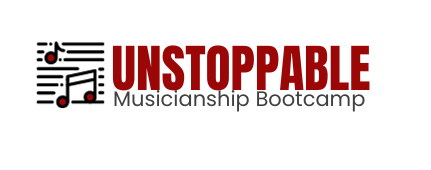Part 3: Solfege Teaching Guide
Running a Demonstration
Initial Preparation
Recruit current piano/voice students and alumni/teachers willing to participate in a demonstration
Choose a popular number from the Dannhäuser solfege book to perform (e.g 39).
Learn the basics of singing and conducting 4/4 time
Practice until all recruits are somewhat of familiar with solfegiating, singing on pitch, and conducting time. If they’ve never done this, it could take a little bit of time to acclimate.
Creating an attendance sheet for audience members to give their name and phone number / email address and who might be interested in taking solfege.
Create flyers announcing the demonstration.
Assure those who are concerned about the demo, that mistakes during the demo are OK. One of the most important things solfege students learn is how never to stop if they stumble, but to listen for the accompanist who may accent the downbeat so that they can conduct the first beat (down) and continue from there. Mistakes shouldn’t be intentional during a demo but if they happen, they are part of the demo and this will ease recruits’ performing concerns.
Lastly, make copies of solfege exercise one on card stock, and tape them to a board so that the audience members could each have a copy to place on their lap after the demo.
Structure of Solfege Demonstration
1. Give an introduction and some history, and explain to the local community the benefits of solfege.
2. Have solfege recruits come on stage, and place their solfege books on music stands around the piano.
3. Ask the audience: who is familiar with The Sound of Music? Raise your hand if you’ve heard of it. Many will raise their hands, which will make the demonstration that much easier since they already know how to solfege, they just might not realize it.
4. Sit at the piano and run through for the audience: do, a deer, a female deer, re, a drop of golden sun… while playing each note on the piano. At “ti, a drink with jam and bread”, explain that the French method is to use “si, a salty drink instead…”. That’s because historically, it was si before England introduced ti in the 19th century so that every note started with a different letter of the alphabet.
Also, si is more lyrical than ti, especially when solfegiating fast and more advanced songs. For example, try singing do ti do ti do ti do rapidly, versus do si do si do si do… Trying to sing two hard, percussive syllables is a challenge and makes the musical delivery more choppy.
One note about using si: most Americans are familiar with the alphabetic notation for music - CDE instead of do re mi. Si and C sound exactly alike, but are different notes (because si is really B in alphabetic notation). Asking what the note is using alphabetic notation eliminates the confusion between si and C.
5. Introduce conducting 4/4 time, which looks like a cross. Make a fist with the right hand and hold the fist up (12 o’clock position). The first beat is down (6 o’clock position), second beat is left (across the body at the 9 o’clock position), third beat is right (out at the 3 o’clock position), and fourth beat is up (12 o’clock position). Solfege demonstrators then demonstrate conducting time. Explain this isn’t easy to do initially, and if people get lost, simply stop beating time, find where they are in the music, note where the other students are (the accompanist will often accent the downbeat), and catch up with the class on the next downbeat and continue.
6. Accompanist and demonstrators then demonstrate both exercise one, and whatever popular number they would like to perform.
7. After the demo, distribute solfege exercise one on card stock to the audience and have the audience learn to conduct time and sing the exercise. They will realize how challenging learning all of these things can be. This helps parents of prospective solfege students to develop some perspective and compassion for what their child will experience when starting out.
8. Remind the audience that if they haven’t added their contact information to the attendance sheet, please do so. Once they walk out the door, it’s impossible to contact them again.
Follow up after demonstration
Go through the attendance sheet, call / email attendees, thank them for attending, ask if they have any questions, and if there is interest, take further steps to enroll students into solfege.
